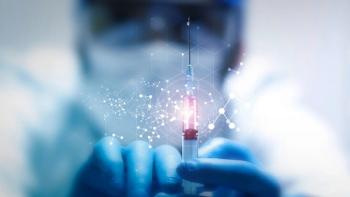
Despite its importance in drug development, dissolution testing still has some limitations, but advances in automation and real-time monitoring are producing promising results.

Despite its importance in drug development, dissolution testing still has some limitations, but advances in automation and real-time monitoring are producing promising results.

Smart, accurate, science-based messaging is needed to advance bio/pharma science.

In-vitro and in-silico tools can help predict in-vivo outcomes for low-solubility drugs formulated as spray-dried dispersions.

The companies will use Ajinomoto’s AJICAP proprietary site-specific bioconjugation technology for the development of Bright Peak’s Immunocytokines.

The companies will aim to establish clinical and commercial supply agreements for Plus Therapeutics’ RNL-liposome drug product at the appropriate stage of development.

The fund will focus on emerging life science companies with novel platforms and methods to improve therapeutic outcomes and those with technologies that support science research, development, and manufacturing.

The move to continuous manufacturing and Pharma 4.0 is resulting in a more data-driven approach to bio/pharma development. Enabling this approach are innovative data systems that can help users improve product quality while facilitating audit-trail review. First used with chromatography, they are now being applied to mass spectrometry.

Hovione has successfully completed the Phase II clinical trial of its ophthalmic formulation of minocycline, Meizuvo.

An integrated CMC provider can help smaller companies to streamline development timelines and reduce project management complexity when compared with multi-provider models.

The Testa Center in Sweden provides access to equipment and expertise to help bridge the gap between biopharmaceutical discovery and industrialization.

Sana will be authorized to use the iPSC cell lines from FUJIFILM Cellular Dynamics for the research and development, clinical and commercial manufacture, and commercialization, of the cell therapies derived from the lines.

Basic principles of physiologically-based pharmacokinetic (PBPK) modeling and its impact in streamlining the drug development process are reviewed.

Continuus Pharmaceuticals is building the first GMP facility using integrated continuous manufacturing technology for end-to-end production of small-molecule APIs and finished dosage forms.

Through the acquisition, Takeda will have access to Maverick’s T-cell engager COBRA platform, along with its development portfolio.

In a pandemic, genetic vaccines offer several advantages over traditional approaches.

Without an independent approval pathway for novel excipients, true pharmaceutical innovation could be stymied.

Various strategies to improve bioavailability are being continuously evaluated, affording greater commercial prospects for the future.

FDA moves recommended timeline for API and drug manufacturers to assess impurity risks to March 31, 2021.

Through the acquisition, Catalent will establish pDNA development and manufacturing services at its Rockville, MD, facility and will gain Delphi’s team of R&D and genetic engineering scientists, technicians, and regulatory specialists.

Aprecia's compression-free 3DP manufacturing platform and Glatt’s multiparticulate technologies offer solutions to pharmaceutical dosage design challenges.

The companies will co-develop and commercialize Rigel's R552, a receptor-interacting serine/threonine-protein kinase 1 (RIPK1) inhibitor, for all indications.

With the acquisition, Eurofins gets Beacon’s G-protein coupled receptor research knowledge and its compound library.

The company has completed the expansion of its laboratory facilities to accommodate the development of APIs.

The companies have expanded their agreement to include the research and development of new therapies for influenza and other respiratory viruses.

The foundation will provide funding support for the discovery and development of a single-administration, in-vivo gene therapy to cure sickle cell disease, a hereditary blood disease.